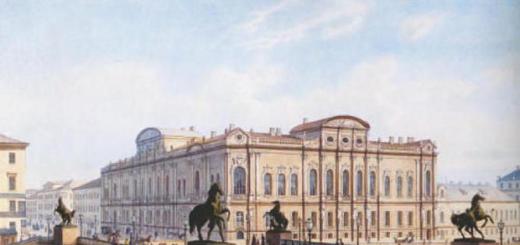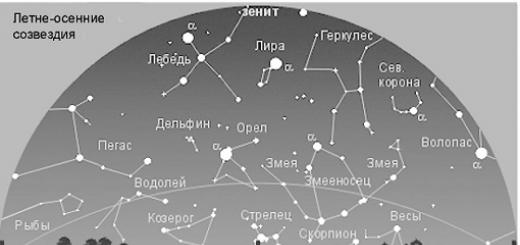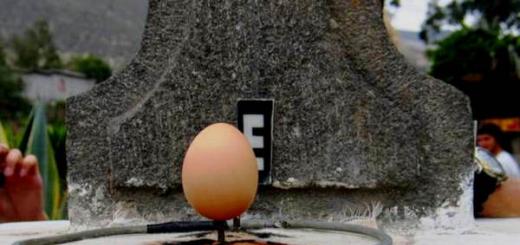The Magic Road of Cyprus is an anomalous area in the Paphos region.
An anomalous zone is a place where anomalous phenomena are constantly observed that official science cannot explain.
Signs of the anomalous zone:
- violations of the passage of time or perception of time;
- animals and birds avoid these places, the vegetation differs from the surrounding area;
- being in the anomalous zone leads to poor health, weakness, weakness;
- an oppressive and heavy feeling, fear, panic, a feeling of an outside observer.
Anti Gravity Road (anti-gravity road)
Between Paphos and Polis there is a stretch of road known as Anti Gravity Road (anti-gravity road) or simply "Anomalous Zone". This is a small section of the road with a clear slope, where, contrary to all the laws of physics, balls, bottles and even cars in neutral gear roll up! And the water flows up, not down. The legs guide the body where to go. That is, “going down” towards Paphos seems a little harder than “going up” in the opposite direction.
What people living in the "anomalous zone" have not seen enough of. The most diverse people come here - both just loitering curious brethren, and even the most real scientists.
Balls and balls are thrown onto the road, water is poured out of a bottle, the motor and brakes of their own cars are turned off - and balls, and water, and cars stubbornly roll up! Even rain streams flow here contrary to all laws of gravity.
A familiar taxi driver told how he spent the whole working day at this place, waiting for a client - a physicist who arrived at the "enchanted place" with various measuring instruments. He buzzed with some devices, measured the angle of inclination of the road in its various sections, crawled on his stomach, and, apparently exhausted, simply lay on the road, wearily watching the cars passing along it.
What does the anomalous zone look like to the naked eye?
Scientific explanation of the anomalous zone of Cyprus
Of course, you can try to understand how this happens.
As an option to solve this phenomenon, we decided that this is still one of the options for an optical illusion, but of very high quality.
This time we will not be able to prove anything, but we will try to explain "on the fingers" where we are being deceived. Let's draw two pictures.
On the first we will reflect what our eyes see and perceive.
Is your answer of course not?
Does the right road slope more to the right?
But no!
These are two absolutely identical roads. And they have exactly the same slope.
Incredible effect!!!
If you don't believe me, check with a ruler.
Such perception illusions have nothing to do with either gravitational or, moreover, antigravitational anomalies.
Video about the anomalous zone in Cyprus
A video illustrating the unusual "gravitational effect" of the Cypriot anomalous zone.You can also see how the car rolls up.
How people traveled from Vladimir to Ryazan in the 19th and early 20th centuries, and why abandoned roads attract lovers of anomalous zones so much.
Among the proposals for domestic tourism, which Vladimir agencies offer to fill our leisure time, extreme expeditions stand apart. Travelers are lured by all the charms of the hike, as well as excavations, work with a metal detector and anomalous zones, in which "almost all anomalous phenomena" are found - chronozones, "prodigal places", giant plants, mysterious animals, ancient people and temples. Among several proposed extreme routes, there is also the "Drevneryazansky Trakt" - the old road from Vladimir to Ryazan, which is currently not functioning, thoroughly overgrown and forgotten. Only some of its sections became country or forest roads, and a small part of the old tract merged with the Vladimir-Raduzhny highway.
The route that today connects Vladimir with Ryazan, passing through Baraki, Gus-Khrustalny, Kurlovo, Tuma and Spas-Klepiki, took shape not so long ago - by the middle of the last century. Until that time, two important cities were connected by the Great Ryazan tract, passing through completely different places than now.
The available data on the time of the appearance and functioning of the road until the 19th century are more like legends. Until the second half of the century before last, the tract had the status of a postal road, then it was transferred to the category of country roads.
Route
Approximately in the place where the Regional Clinical Hospital is now located, the Ryazan tract separated from the Murom road, and took it further south. About a kilometer the road passed through the forest, now called the Country Park (the remains of the tract in the park have survived to this day). Behind the wooden bridge across the Black River, another important road separated from the Ryazansky tract - the Kasimovsky tract.
| village | Position in relation to the road | Current state |
|---|---|---|
| Ladoga, der. | To the left, a little further away | Exists |
| Sokolovo, der. | On the left, in the area of the present Southern Bypass | Disappeared at the beginning of the 19th century |
| Dubrovka, der. | Disappeared in the twentieth century | |
| Ryazanovka, der. | On the left, a little in the distance, the territory of the modern Electric Appliance Gardens | Disappeared in the twentieth century |
| Komlevskaya, der. | On the left, a little in the distance, in the area of the Ulybyshevsky cemetery | Disappeared in the middle of the XIX century |
| White Farm | On the road, near the Slybyshevsky cemetery | Disappeared in the 20th century |
| Vaneevka, der. | To the right, a little further away | Exists |
| Bogdanovka, der. | On the road | Disappeared in the second half of the 20th century, now a field |
| Golovino, der. | On the road | Exists, became part of the village of Golovino |
| Kryukovo, der. | Right side of the road | Exists |
| Kamenitsa, der. | On the road | Exists |
| Starikovo, der. | Right side of the road | Exists |
| Nikola-on-the-field, churchyard | Left, in the distance | Exists, non-residential, there is a church |
| Dushenkino, der. | To the left, a little further away | non-residential |
| Korovino, der. | On the road | Disappeared in the twentieth century |
| Pashino, der. (Pashinskaya) | On the road | Disappeared in the twentieth century |
| Chapel Forest Guard (and inn) | On the road | Does not exist |
| Vasilevsky, farm | On the road | non-residential |
| Savinskaya, der. | To the left, a little further away | Exists |
| Grishki, der. (Grishinskaya) | On the road | Exists |
| Abbakumovo, der. | Left, close | Exists |
| Trufanovo, der. | On the road | Exists |
| Erleks, churchyard | On the road | Exists |
| Budevichi, der. | On the road | Exists |
The length of the Ryazan tract within the Vladimir province was approximately 75 versts. The road crossed 5 volosts: Pogrebishchenskaya and Podolskaya of the Vladimir district (21 versts), Avdotinsky, Bereznikovskaya and Yagodinskaya of the Sudogodsky district (54 versts).
The road crossed the river Pol (Pole) four times: in the section between the village of Starikovo and the Nikolopolsky churchyard, between the villages of Korovino and Pashino (slightly to the south) and after the churchyard of Erleks. Bridges were built in these places. The most difficult section of the road was three dozen miles between the villages of Korovino and Grishki. Here, between the rivers Poli and Buzha, there was a swampy lowland area - forested and deserted.
In 1886, a certain K. Smirnov, who traveled from Vladimir to the churchyard of Nikola-on-the-Polye along the highway, wrote:
“The path for foot and horse riding is extremely inconvenient, one might say primitive: the path by which during it, the Vladimirs and Ryazans hid from the Tatars. Whom to blame for the malfunction of the road - the zemstvo or the local peasants - is unknown to an outside traveler; but the Russian favorite, perhaps, but somehow helps the peasant here ... ".
The main reason for the poor condition of the road was the difficulty of both peasants and zemstvos in the means. The peasants maintained those sections of the tract that ran through their allotments. The zemstvo sometimes helped the peasants: they gave out allowances for maintaining the wooden bridges of the tract in good condition. Later, at the end of the 19th century, it decided to accept the bridge structures of the Ryazan road at its own expense.
However, zemstvo road capital was constantly lacking. Since the tract was not of strategic importance, in the expenditure items of annual budgets, for example, the Sugogoda district zemstvo, it usually fell into the second place, after the Simbirsk and Kasimov tracts. But something was nevertheless done: bridges were repaired and rebuilt: instead of three bridges over the river Pol and the channels, in the dead place between the villages of Korovino and Pashino, at the end of the 19th and beginning of the 20th centuries, a dam about 210 sazhens long was poured.
Translator riding. Zemsky equestrian posts
For movement on the Ryazan tract within the Vladimir province in the second half of the 19th century, there were two zemstvo equestrian points (not counting Vladimir): in the villages of Korovino and Grishki. The chase was quite significant. There were from 2 to 5 horses in the points in different years, the annual mileage of each of which was several thousand miles.
The inconsistent road policy of the Sugogoda and Vladimir district zemstvos can be seen very well in the history of equestrian posts. For example, by a decree of the Vladimir Zemstvo Assembly, the coachmen were obliged to carry the employees of the forestry department from Vladimir to the point in Korovino free of charge. Back, to Vladimir, from Korovino, forest officials were no longer transported free of charge, because the Sugogoda zemstvo assembly did not have a similar resolution.
The value of the road
Traffic along the route, especially before the opening of the Vladimir-Ryazan railway in the early twentieth century, was busy. The road connected Vladimir with Ryazan, served many villages in the southwestern part of the province, whose peasants supplied food, hay, firewood, and coal to the Vladimir bazaars. Many country roads flowed into the tract from the villages. On market days, it was still dark when the peasants rode carts or sledges to Vladimir. Usually we traveled in 3-4 carts. A kerosene lantern was hung under the arc of the lead horse's team to illuminate the road. They were very afraid of robbery. The road had a bad reputation for robbers.
On the Ryazan road, they went to Nikopol (May 9) and Palishchensky (August 2) churchyards to fairs that fall on the patronal holidays of these villages. A particularly rich fair was in the Ryazan churchyard Palishchi (now the Gus-Khrustalny district of the Vladimir region), which also lay on the Ryazan tract.
The sawmills of large state-owned and privately owned forest dachas of the Sudogodsky district (Baglachevskaya, Korovinskaya, Ivanishchevskaya, etc.) were tied to the tract. It also carried peat from local developments. The tract connected Tasinsky and Ivanishevsky crystal factories with the world. Access roads led from both factories to the road. The entrance from Ivanishchi, overlooking the highway in the area of the Chasovenskaya guard, was annually supported by the owners of the crystal factory - merchants, the Panfilov brothers.
Ryazan tract and Vladimir-Ryazan railway
Built in 1899-1901, the Vladimir-Ryazan narrow-gauge railway unloaded traffic along the Ryazan tract, tied the surrounding villages and logging to itself. The value of the Ryazan tract has decreased.
The railway in some places of the Vladimir district passed directly along the tract. Peasants were constrained in movement. In the Vladimir Archive, a very confusing petition from the inhabitants of the villages of Bogdanovka and Golovino, Podolsk volost, regarding this problem, has been preserved:
To the Vladimir commission for land valuation,
destined for construction
Tumo-Vladimir narrow-gauge railway.
From the peasants of the society of the village of Golovino and Bogdanovka
Podolsky parish.
Petition.
Since the aforementioned narrow-gauge railway is being built in our area, travel is on a large road along which we have a passage and a passage, but at the present time we are in an extremely cramped position and lose our own road, namely, we remain positively without a road where to go and where, but not to make different detours for several miles. The fault is not ours, but in the last resort we must be satisfied, since the real road has been taken away from us, then we need to indicate the place on the road where we could travel completely freely and without any danger, as we should, and not be in a cramped position. . Our travel road, occupied by the railway, is called the big tract road from Vladimir to Ryazan.
And why do we have to humbly ask the Vladimir Commission, in accordance with the foregoing, to rise to our position and make due orders on our part to indicate places for us to pass. To which we sign."
The Vladimir Evaluation Commission for the Alienation of Land - an intermediary between the landowners and the builders of the railway - the petition was read and considered. The Society of Access Roads was entrusted with an obligation: to lay a new section of the tract on peasant land, and to pay remuneration to the villages for the land.
The same situation was in the area near the village of Cherepovo, which belonged to the Cherepov Kalashnikov brothers and a peasant woman from the village of Bogoslova Alexandra Musatova. "Manchzhurka" (the unofficial name of the Vladimir-Ryazan narrow-gauge railway) occupied a part of the tract with three bridges over the rivers here. To build a new section of the tract, it was necessary to cut down the forest and build three new bridges. The Kalashnikovs appealed to the commission with a request to oblige the Society to build bridges or give them 150 rubles for each (450 rubles in total). The company rejected the offer of payment and took over the construction of a new site with all the facilities.
From the history of some roadside villages
- The village of Ladoga, Pogrebishchi volost. In the late 18th and early 19th centuries, Ladoga belonged to the son of the first Vladimir governor Roman Vorontsov, Alexander Vorontsov. The main occupation of the peasants of Ladoga, as well as the neighboring villages of Dubrovka and Ryazanovka, standing on the highway, was the work of servants and polishers in Vladimir tavern establishments. This type of waste was generally common in the parish of the village of Pogrebishchi (aka Nikola-Yaslishcha, Coal Pit, Samara). According to one of the popular names of the village - "Samara", all the employees of taverns from the Pogrebishchi district in Vladimir were called "Samarovites".
- The villages of Bogdanovka and Golovino. In the XVIII century, both villages belonged to Vladimir Assumption Cathedral. Bogdanovka and Golovino stood right on the road, and at the end of the 19th century both had inns.
- Churchyard of Nikola-on-the-Polye. The village was famous for the ancient miraculous image of St. Nicholas, which appeared at the spring. In the 19th century, a wooden chapel stood over the holy key, to which pilgrims came from all over the region and from different places in the province. The stone two-storey Nikolskaya Church of the churchyard itself, instead of the wooden one, was built in 1818-1822. The peasants explained the absence of epidemic diseases of cattle in the Nikopol parish in the 19th century by the special patronage of Nicholas the Wonderworker.
- Villages Dushenkino, Korovino, Pashino. These were real forest villages. Almost right next to them adjoined a huge array of the Baglachev government dacha. During forest fires, which occurred most often during the summer season, the peasants of three villages were obliged to put out the fire for free, which took a lot of time. So, for example, in 1901, 226 people from these villages went out to put out fires 11 times.
anomaly
In 2003, there was no trace left of Korovino and Pashino. There were several houses in Dushenkino. Of these, only one was inhabited. A lonely elderly man lived among the wild forest and deserted people and even kept goats.
Photo from http://foto-planeta.com
http://foto-planeta.com/photo/120616.html
When asked about anomalous zones, giant plants, mysterious places on the former Ryazan Highway, the man just laughed. Of the anomalous phenomena, he recalled only the rafting of activists of the LDPR party along the Pole River, on which every 2 meters there is a shoal and a blockage of trees. But the aborigine confirmed the information about prodigal places, warning that it is better not to move further towards Ryazan - you may not leave the forest. If from Vladimir to Dushenkino the tract is still fragmentarily preserved, then everything further is overgrown with fir trees and pines.
The highway from Nevada to Connecticut has been the site of several mysterious disappearances. At least three people disappeared without a trace after driving onto it. And it happened under similar circumstances: none of the missing was eventually found, but their empty cars were found - almost in the same place.
A suicide note was found in the car of Nan Dixon, who went missing in 1978. Judith Kazida, who disappeared in 2006, also left a letter at home before leaving for I-80 saying she felt uncomfortable and depressed. And in 2011, Patrick Carnes disappeared on the track - the circumstances of his disappearance are generally incomprehensible to anyone. Perhaps all three committed suicide, but why in the same place?
Highway Lyubertsy-Lytkarino, Russia
An error occurred during the download.
One of the most terrible roads in Russia is located in the Moscow region. On one of the sections of the Lyubertsy-Lytkarino road, where the road passes through a spruce forest, fatal traffic accidents occur with appalling regularity.
In 1989, there was an accident involving a wedding cortege, in which the bride and groom died. From then until 2002, about 20 serious accidents and many minor collisions occurred on this site, which have already lost count. The story of a ghost in a wedding dress, which seemed to be regularly seen here, also evoked horror.
However, the ghost was defeated very simply: with the help of the reconstruction of the roadway and laying speed bumps. This happened in 2003, and since then the accident rate of the site has noticeably decreased.
Flinders Highway, aka Death Road, Australia
The highway gained a terrible reputation after several brutal murders happened on it, which have not been solved so far. The number of victims has already reached 12. Moreover, the first disappearance occurred in 1970, and the last person killed was found this year. The dead were of absolutely different age and social status.
What happens on the mysterious track? A maniac who has been operating for 48 years now? Or "elusive avengers" from among the Australian aborigines? It is unlikely that we will find out in the near future. To everyone who is going on a trip to Australia, we advise you not to repeat the mistakes of the heroes of horror films: travel in large groups, do not split up and be sure to leave someone on duty if you suddenly spend the night “in the field”.
Yungas Road, Bolivia
Every year about 300 people die on the bends of this mountain road. The road connecting the country's capital, La Paz, with the town of Coroico, is notorious among the locals and attracts tourists who want to tickle their nerves.
The 70 km long road was laid by Paraguayan prisoners in 1930. It climbs to a height of up to 4600 meters, its width ranges from 3 to 3.5 meters, and the average depth of the abyss under it is about 600 meters. Fog, strong winds, landslides and falling trees await drivers along the entire route. Rusted and moss-covered crosses are everywhere on the edge of the road, adding to the oppressive atmosphere. Alas, there is no other way from La Paz to Coroico, so the road is not closed.
There have always been mysterious, inexplicable phenomena. After all, it is impossible, in a relatively short life, to fully know the world around us. It is like a road tape under the wheels of a car - no matter how much you drive, new horizons and an unknown (at the moment) future open up before you all the time.
But this, it turns out, is not all our possibilities. You can also look into the past. Many have heard or even seen mirages. There is nothing unusual about them. Optical physicists have long since revealed all their secrets. All but one. It is in no way possible to explain by the known laws of physics why mirages can reflect events occurring at some distance not only in space, but also in time. This happens quite often, if we take our entire human history as a starting point:
In some cases, people hardly identify what they see, in other cases they directly indicate that the mirage shows some “place that does not exist”. Does not exist in our present time. In rare stories, eyewitnesses manage to understand that in front of them are “settlements of the past” or even “cities of the future”. Of course, much more often mirages show us easily recognizable images of houses and cities located here and now. But such banal mirages do not impress eyewitnesses, they are rarely recorded in the annals, and, finally, they do not interest us. We need only mirages at the moment, perhaps carrying images through time.

There is a parapsychological term that means the attachment of some visions to a certain geographical point, "-" hotting ". As a rule, honting is observed in places where mass battles once took place, accompanied by large human losses. Most of the ghosts of executed or innocently killed victims are also observed only near the places of death. The nature of such attachment is still not clear. Sometimes several hundred ghosts appear in such places at the same time, mass huntings are most often observed where bloody battles once took place. Sometimes the reason for the appearance of a "hoting" place remains unclear. As well as the reason for the appearance of chrono-miracles ...
This mystical story, which lasted only a few seconds. It took place on the 247th kilometer of the state highway P-60 Kyiv - Sumy - Yunakovka, in the now distant 1985.

With one of the eyewitnesses of a strange vision (to clarify the details), I talked on the phone in early January 2016. This is a resident of Voloshnovka (Sumy region) Anatoly Dodatko (68 years old). The first conversation with him took place in 2012.
This ordinary P-60 highway attracted me with its mysticism, which has manifested itself here for many years. A segment of only 50 kilometers (Poltava and Sumy regions) was remembered by different people by visions and sounds from the past - spatio-temporal anomalies or chrono-anomalous phenomena. After many documented stories from eyewitnesses, trips to the places of phenomena, a certain mystical triangle “formed” on the map-scheme, which.

"Bugayka" is a territory where, at the beginning of the 20th century. the eponymous farm Malaya Bugayka arose. It recorded the largest number of different mystical phenomena that occur today. The anomalous zone Malaya Bugayka (author's opinion) is located 10 kilometers from the R-60 road.
The second story. Woman in clothes of the 18th century.
Late summer 1985. Around 12 o'clock at night. Excellent visibility. Dry asphalt pavement. Anatoly Dodatko, together with his adult son (who recently came from the army), is traveling from Kyiv, in the Poltava region, to the city of Romny. The son sits to the right of the father-driver. Anatoly does not pay attention to him, thinks that he is sleeping. To the right of the course of movement is a cornfield (no forest), to the left is the railway. In this story, the detailing of the event is very important in order to somehow objectively assess the reality of what is happening.
The situation is calm, the psyche is normal. The car "Moskvich - 412" - new, speed, about 100 km / h, road lighting is good, there is no oncoming traffic.
Her clothing is linen. The dress touches the asphalt, on the head is an old cap (ochipok) or kokoshnik. At hand, she carries an armful of dry brushwood (firewood). Firewood was clumsy (eyewitness). Moves slowly, from the side of the field to the railroad, keeps his head straight. The road passes diagonally to the observer. Everything happens in a matter of seconds.
The driver swerves to the right so as not to hit the woman. He passes it safely. That's all, they are already in the Sumy region. The father hears the voice of his son Vladimir: "Where did she come from ...?". He, the son, says that he did not sleep and saw everything.
Both of them were shocked for a short time. Even on the way, they wanted to go back and see the vision again. But they didn't do it… Every detail was remembered. Many years, experienced in a few seconds, was a mystery for two (there were such times).
Drawing certain conclusions is a thankless task. Our world (even a very close one) remains a mystery to us in many ways and holds its secrets tightly.
... And let everyone see and hear what they want ...
Vladimir Litovka
All over the world, road accidents often occur that are difficult to explain using ordinary logic. Sometimes, such incidents can only be called mysterious and amazing. It happens that incomprehensible and dangerous things often happen on the same section of the road. Experts call such areas anomalous zones.
In Russia, the most famous anomalous road leading to the small town of Lytkarino is called the “death road”. This is a completely straight track with good asphalt has become a real burial ground for many cars. Most often, the culprits of the accidents were ghosts. Drivers and passengers told with horror how images of dead people suddenly appeared on an empty road.
In 1930, an article appeared in an American newspaper that described an interesting thing that happened on a freeway in Saxony: almost forty cars stalled on the road at the same time. No matter how hard the drivers tried, they could not start their cars. About an hour later, all the motors started working by themselves. But on this freeway, cars not only broke down - quite often there were large and inexplicable accidents here. The most famous was the accident that occurred in the winter of 2012. Then more than twenty cars collided, and there was no fog and ice that day.

There is also an anomalous road in Moldova. Ignoring all the laws of gravity, cars in neutral gear start to go uphill, and ordinary water, instead of flowing down an inclined plane, flows up. Scientists are sure that all the oddities that occur on this road are associated with increased seismic activity in this area.

Road to Nowhere is the name of a highway located near Albuquerque, New Mexico. And, indeed, more than ten cars with passengers left on this road “to nowhere”. The anomalous zone was visited by scientists and detectives, even psychics came here, but no one managed to unravel the mystery of the disappearance of people.
There is also an anomalous road in Arkansas called "Satan's Road". Here, the black limousine is the cause of most accidents. Drivers claim that a ghost limousine suddenly appears on the highway, blocking the path of other cars. It was not possible to find out who owns the black limousine, since similar cars simply do not exist in the district.

“Road” - just from one name it becomes somehow creepy. Driving down this road is even scarier. First, the road runs right over the abyss. Secondly, fatal accidents happen here literally every other day. "Devil's Road" is located in America. Locals consider the track cursed and say that the devil himself takes people away.










